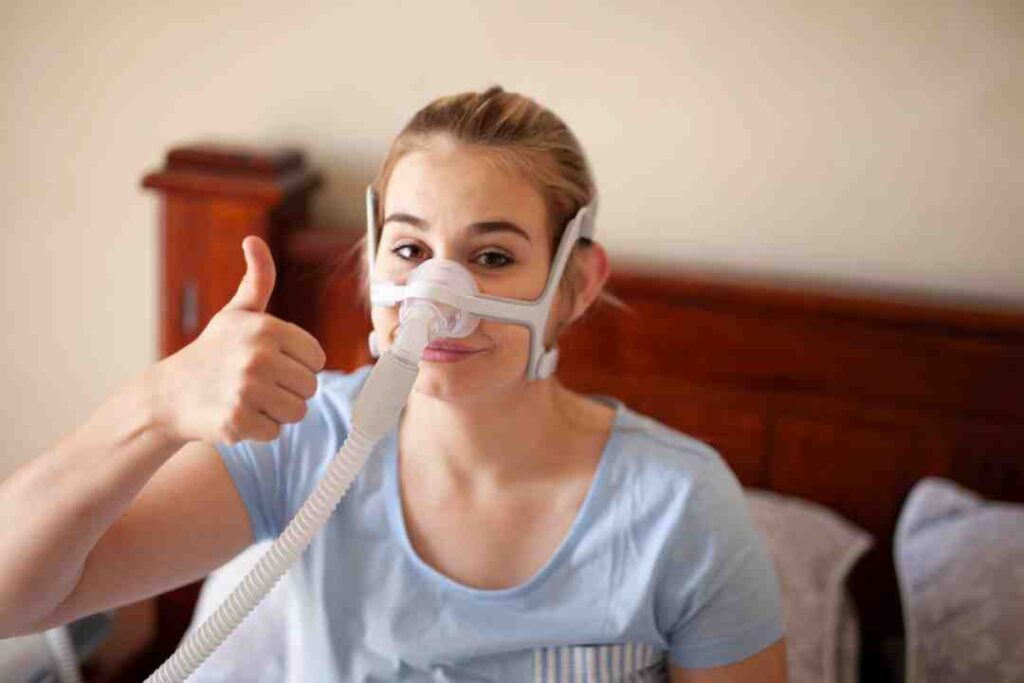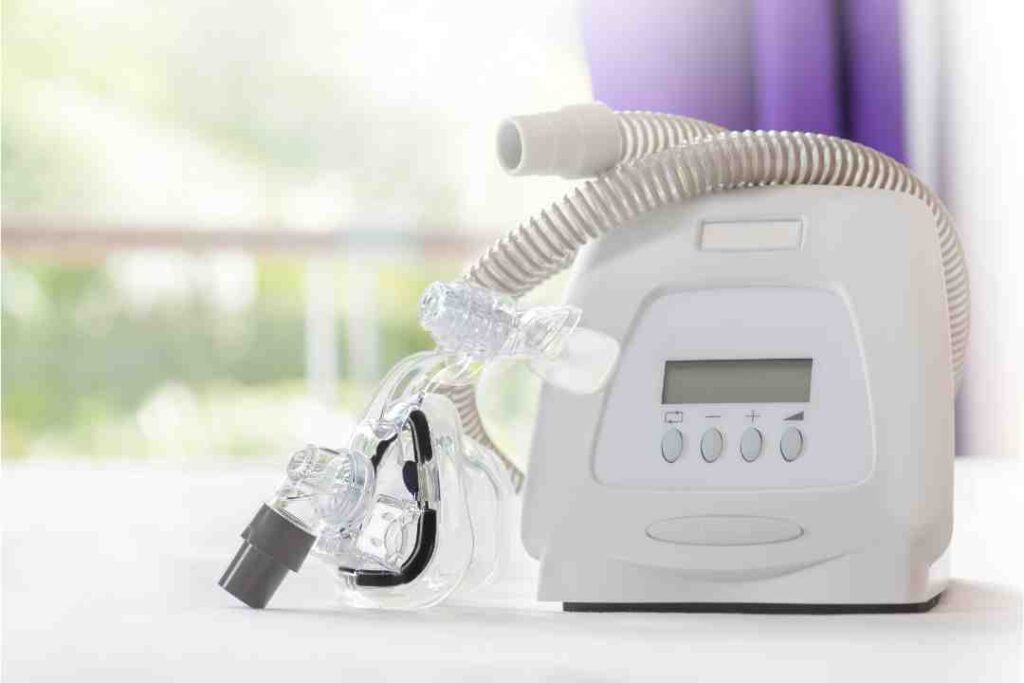In today’s fast-paced world, getting a good night’s sleep can often be challenging. And for those with sleep apnea, a serious sleep disorder, a good night’s sleep can seem like an impossible dream. Sleep apnea is a condition in which a person’s breathing repeatedly stops and starts during sleep. This can lead to fragmented and poor-quality sleep, leaving individuals feeling exhausted and unrefreshed the next day.
Fortunately, there are treatment options available for sleep apnea like CPAP masks Australia, and one of the most common and effective treatments is the use of sleep apnea machines. These machines, also known as continuous positive airway pressure (CPAP) machines, work by delivering a steady stream of pressurized air into the airway to keep it open during sleep.
Understanding Sleep Apnea and Its Treatment
In order to fully appreciate the importance of compliance with sleep apnea machine therapy, it’s helpful to have a clear understanding of what sleep apnea is and how it is treated. Sleep apnea is a disorder characterized by pauses in breathing or shallow breaths during sleep. It can be caused by a variety of factors, including obesity, genetics, and anatomical abnormalities of the airway.
What is Sleep Apnea?
Sleep apnea is a potentially serious sleep disorder that affects millions of people worldwide. It is characterized by repeatedly stopping and starting breathing during sleep, leading to disrupted and fragmented sleep patterns. This can result in excessive daytime sleepiness, poor concentration, and an increased risk of accidents and other health problems.
When a person with sleep apnea falls asleep, the muscles in their throat relax, causing the airway to narrow or close altogether. This obstruction leads to a decrease in oxygen levels in the blood, triggering the brain to wake the person up briefly to resume breathing. These interruptions in sleep can happen multiple times throughout the night, preventing the affected individual from getting the restorative sleep they need.
There are three main types of sleep apnea: obstructive sleep apnea (OSA), central sleep apnea (CSA), and complex sleep apnea syndrome (CSAS). OSA is the most common form and occurs when the muscles in the back of the throat fail to keep the airway open. CSA, on the other hand, is caused by a failure of the brain to send the proper signals to the muscles that control breathing. CSAS is a combination of both OSA and CSA. You can also read about Wake up to the risks of Sleep Apnea by visiting https://carlawillsbrandon.com/wake-up-to-the-risks-of-sleep-apnea/

The Role of Sleep Apnea Machines in Treatment
Sleep apnea machines, such as CPAP machines, are an effective treatment option for sleep apnea. They work by delivering a constant flow of pressurized air through a mask worn over the nose and/or mouth. This pressurized air helps to keep the airways open during sleep, preventing the pauses in breathing that characterize sleep apnea.
CPAP stands for Continuous Positive Airway Pressure. The machine consists of a motor that draws in air from the room, filters it, and then delivers it at a prescribed pressure to the patient via a tube and mask. The pressure acts as a splint, preventing the collapse of the airway and allowing for uninterrupted breathing throughout the night.
CPAP machines can be adjusted to suit each individual’s needs, with different pressure settings and mask options available. Some machines also come with additional features, such as heated humidifiers, to enhance comfort and reduce side effects like dryness or congestion.
It is important for individuals with sleep apnea to use their CPAP machines consistently and correctly in order to experience the full benefits of treatment. Compliance with therapy can improve sleep quality, reduce daytime sleepiness, and lower the risk of associated health problems, such as high blood pressure, heart disease, and stroke.
While CPAP therapy is the most common treatment for sleep apnea, there are other options available for those who cannot tolerate or benefit from CPAP. These include oral appliances, which reposition the jaw to keep the airway open, and surgery, which can be used to remove excess tissue or correct structural abnormalities in the throat or nasal passages.
The Importance of Compliance in Sleep Apnea Therapy
While sleep apnea machines can be highly effective in treating sleep apnea, it is crucial for individuals to use them consistently and as prescribed in order to reap their full benefits. Unfortunately, many individuals struggle with compliance and find it difficult to adhere to their therapy. However, the risks of non-compliance should not be underestimated.
The Risks of Non-Compliance
Non-compliance with sleep apnea machine therapy can have serious consequences for both your health and well-being. When you don’t use your machine as prescribed, the pauses in breathing characteristic of sleep apnea will continue to occur, leaving you vulnerable to the negative effects of untreated sleep apnea. These effects can include increased blood pressure, an increased risk of heart disease and stroke, and a higher likelihood of experiencing daytime fatigue and poor concentration.
It is important to understand that sleep apnea is a chronic condition that requires ongoing management. By not complying with your therapy, you are essentially allowing the condition to persist and worsen over time. The pauses in breathing can put a strain on your cardiovascular system, leading to long-term damage. Additionally, the lack of quality sleep can impact your overall quality of life, affecting your mood, productivity, and relationships.
Furthermore, untreated sleep apnea can have a negative impact on your mental health. The chronic sleep deprivation caused by the condition can contribute to the development or exacerbation of mood disorders such as depression and anxiety. It can also impair your cognitive function, making it difficult to concentrate, remember things, and make decisions.
Benefits of Regular Use of Sleep Apnea Machines
On the other hand, regular and consistent use of sleep apnea machines can greatly improve your sleep quality and overall well-being. By keeping the airways open and facilitating uninterrupted breathing, these machines can help to alleviate the symptoms of sleep apnea and promote restful sleep. The benefits of regular use can include increased energy during the day, improved concentration and cognitive function, and a reduced risk of long-term health complications associated with untreated sleep apnea.
When you use your sleep apnea machine as prescribed, you are effectively treating the underlying cause of your sleep apnea and addressing the associated health risks. By ensuring that your airways remain open throughout the night, the machine helps to prevent interruptions in breathing that can lead to oxygen deprivation and other complications. This, in turn, reduces the strain on your cardiovascular system and lowers the risk of developing heart disease, stroke, and other cardiovascular conditions.
In addition to the physical benefits, regular use of sleep apnea machines can also have a positive impact on your mental health. By improving the quality of your sleep, these machines can help to alleviate symptoms of depression and anxiety that may be exacerbated by sleep deprivation. With better sleep, you may also experience improved mood, increased motivation, and a greater sense of well-being.
It is important to note that compliance with sleep apnea therapy is not always easy. Some individuals may find it uncomfortable to wear the mask or struggle with adjusting to the machine’s airflow. However, there are various strategies and support systems available to help you overcome these challenges. Working closely with your healthcare provider and seeking support from sleep apnea support groups can greatly increase your chances of success in adhering to your therapy.
In conclusion, compliance with sleep apnea therapy is crucial for maximizing the benefits of treatment and minimizing the risks associated with untreated sleep apnea. By using your sleep apnea machine regularly and as prescribed, you can improve your sleep quality, enhance your overall well-being, and reduce the likelihood of developing serious health complications. Remember, your commitment to your therapy plays a vital role in managing your sleep apnea and improving your quality of life. Click here to read about dysfunctional breathing and reaching one’s physiological limit as causes of exercise-induced dyspnoea.

Common Challenges in Adhering to Sleep Apnea Machine Therapy
While the benefits of sleep apnea machine therapy are clear, it is not without its challenges. Many individuals struggle with various issues that can make it difficult to adhere to their therapy. Addressing and overcoming these challenges is essential for long-term compliance and successful treatment.
Physical Discomfort and How to Overcome It
One common challenge in using sleep apnea machines is physical discomfort. Some individuals find the mask uncomfortable to wear or experience skin irritation or pressure sores. To overcome this challenge, it’s helpful to try different mask styles and sizes to find the one that fits you best. You can also adjust the straps and padding to maximize comfort and minimize skin irritation.
Dealing with Noise and Other Disturbances
Another common challenge is dealing with noise from the machine or disturbances caused by the presence of the mask and tubing. This can disrupt sleep and make it difficult to fall asleep or stay asleep. To address this challenge, consider using a machine with quiet operation or placing the machine farther away from the bed. Additionally, using a mask with reduced noise levels and keeping the tubing properly supported can help minimize disturbances.
Practical Tips for Increasing Compliance
While overcoming the challenges of sleep apnea machine therapy may seem daunting, there are practical tips and strategies that can help increase compliance and make your therapy more effective and enjoyable.
Creating a Comfortable Environment for Therapy
Creating a comfortable environment for sleep apnea machine therapy is essential for compliance. This includes ensuring that your bedroom is conducive to sleep, with a cool and quiet atmosphere. Investing in a comfortable mattress and pillows can also improve overall comfort and sleep quality.
Incorporating the Machine into Your Nightly Routine
Another helpful tip is to incorporate the use of the sleep apnea machine into your nightly routine. Make it a habit to put on the mask and start the machine at the same time every night. This can help signal to your body and mind that it’s time to sleep and make the therapy feel like a natural part of your bedtime routine.
Seeking Professional Help for Compliance Issues
If despite your best efforts, you’re still struggling to adhere to your sleep apnea machine therapy, it may be time to seek professional help. Your doctor and sleep therapist can provide guidance, support, and solutions to help address any compliance issues you may be facing.
When to Consult Your Doctor
If you’re experiencing persistent physical discomfort or have concerns about the effectiveness of your therapy, it’s important to consult your doctor. They can evaluate your situation, make any necessary adjustments to your treatment plan, and provide additional resources for support.
The Role of Sleep Therapists in Compliance
Sleep therapists play a crucial role in helping individuals with sleep apnea achieve compliance with their therapy. They can provide education, support, and strategies to address challenges and improve adherence. If you’re struggling with compliance, consider reaching out to a sleep therapist for assistance.
In conclusion, adhering to your sleep apnea machine therapy is essential for effective treatment and improved quality of life. By understanding the importance of compliance, addressing common challenges, and implementing practical tips, you can increase your compliance and enjoy the full benefits of sleep apnea machine therapy. Remember, a good night’s sleep is within your reach!

